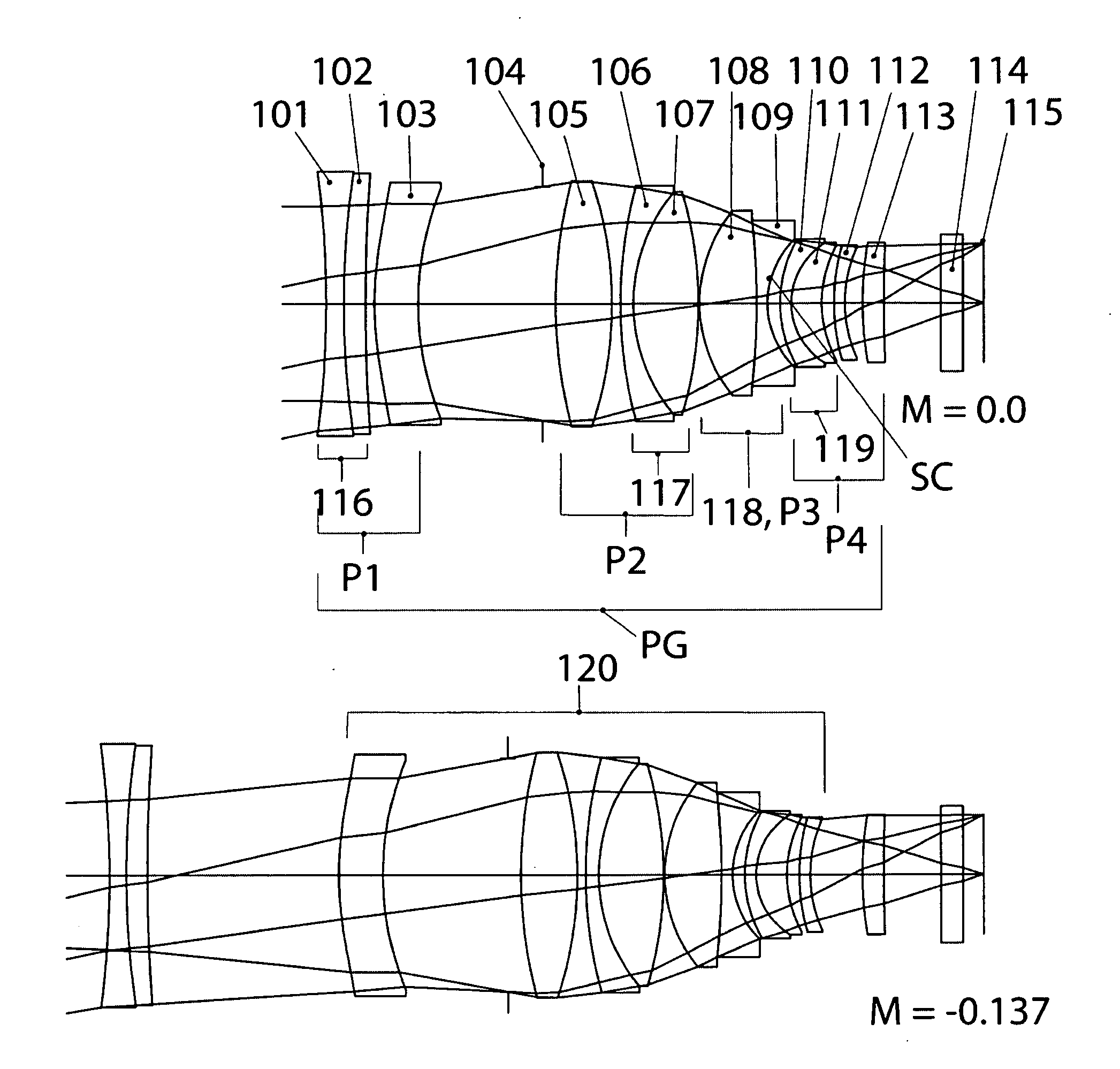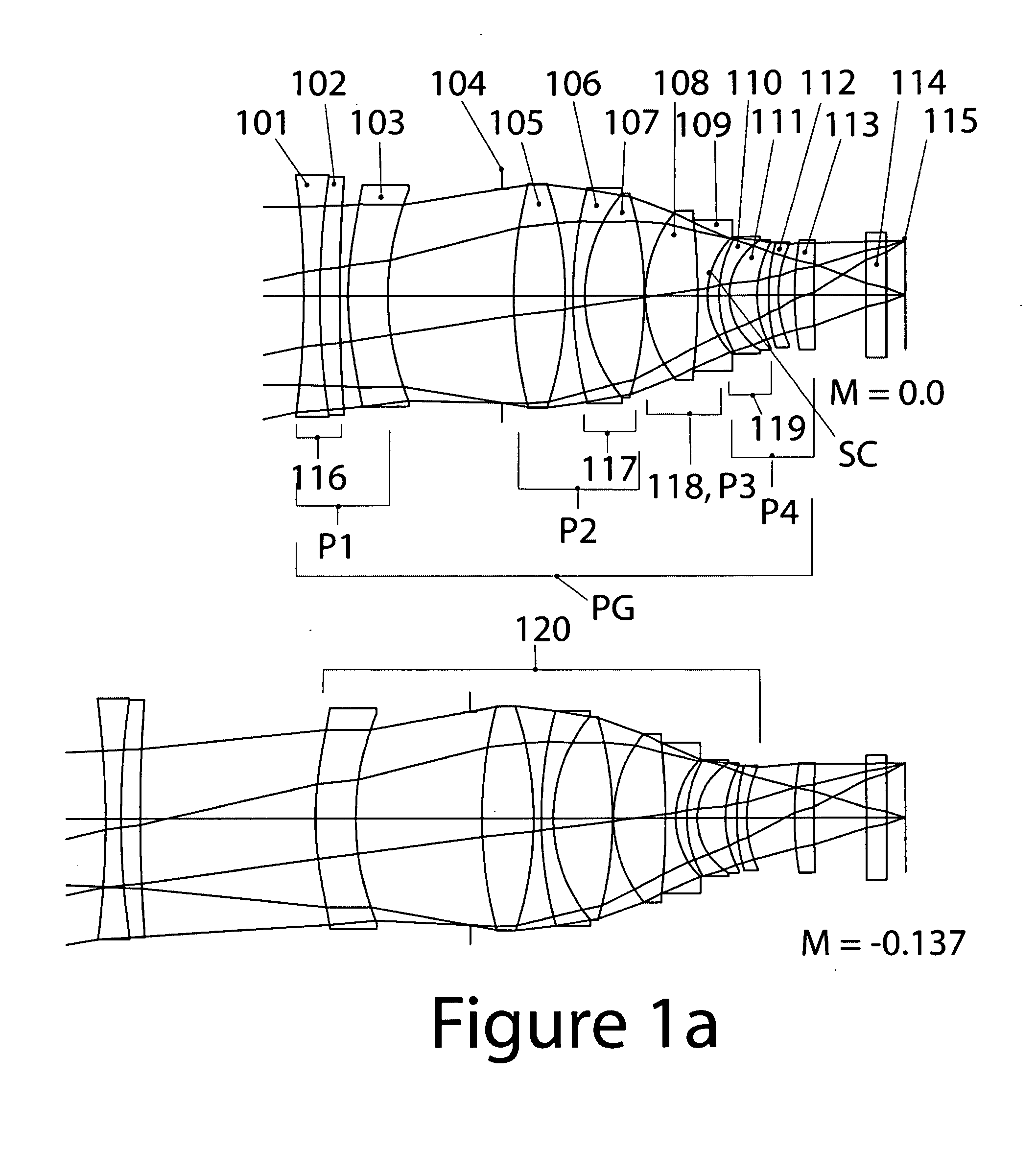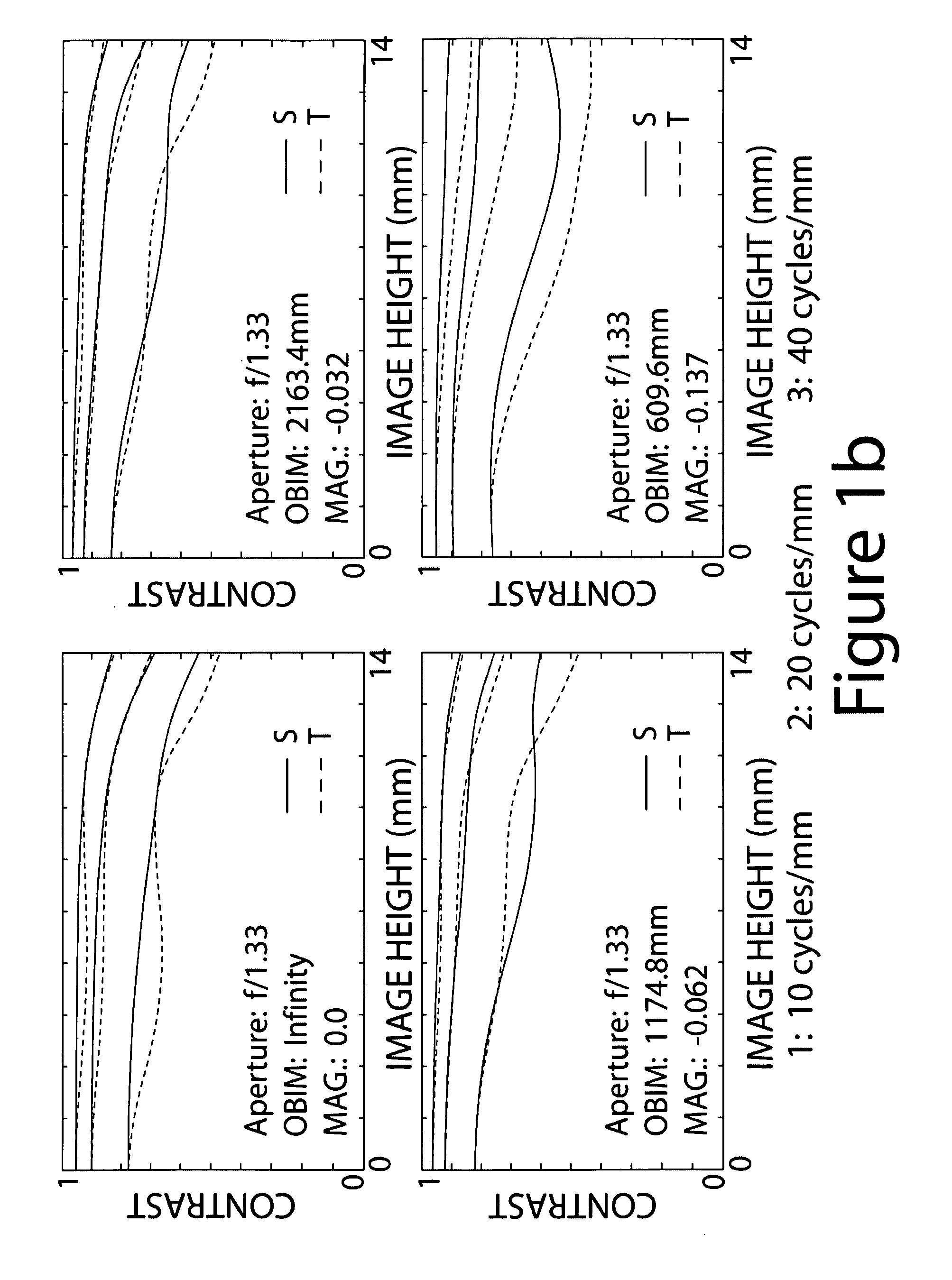Large aperture imaging optical systems
a technology of optical systems and large apertures, applied in optics, telescopes, instruments, etc., can solve the problems of difficult or impossible correction of secondary spectrum, severely limit off-axis performance at wide apertures, and general mediocrity of high-speed wide-angle examples, etc., to achieve the effect of improving performan
- Summary
- Abstract
- Description
- Claims
- Application Information
AI Technical Summary
Benefits of technology
Problems solved by technology
Method used
Image
Examples
example 1
[0093]Example 1, which is a 65 mm focal length objective for 35 mm format cinematography, is illustrated in FIG. 1a, which shows cross-sectional layouts at magnifications of 0 and −0.137×.
[0094]All of the element and group designations mentioned below are shown in FIG. 1a. The relative aperture is f / 1.33, the image diagonal is 28 mm, and the diagonal field of view (FOV) is 24.3 degrees.
[0095]MTF vs. Image Height at 10, 20 and 40 cycles / mm for four different object distances is illustrated in FIG. 1b. These curves indicate that Example 1 is extremely well corrected at f / 1.33, with MTF values at 40 cycles / mm greater than 80% near the optical axis in the middle part of the focusing range and very near 80% at the extreme ends of the focusing range. This extraordinary performance falls off very gradually to the corner of the field, and the S and T curves stay close together. FIG. 1c shows distortion and astigmatism (Coddington curves) for the same four object distances used in FIG. 1b. D...
example 2
[0107]Example 2, which is a 65 mm focal length objective for 35 mm format cinematography, is illustrated in FIG. 2a, which shows cross-sectional layouts at magnifications of 0 and −0.124×. All of the element and group designations mentioned below are shown in FIG. 1a. The relative aperture is f / 1.4, the image diagonal is 28 mm, and the diagonal field of view (FOV) is 24.3 degrees.
[0108]MTF vs. Image Height at 10, 20 and 40 cycles / mm for four different object distances is illustrated in FIG. 2b. These curves indicate that Example 2 is extremely well corrected at f / 1.4, with MTF values at 40 cycles / mm greater than 80% near the optical axis in the middle part of the focusing range and very near 80% at closest focus. This extraordinary performance falls off very gradually to the corner of the field, and the S and T curves stay close together. FIG. 2c shows distortion and astigmatism (Coddington curves) for the same four object distances used in FIG. 2b. Distortion is less than 1% at all...
example 3
[0115]Example 3, which is a 65 mm focal length objective for 35 mm format cinematography, is illustrated in FIG. 3a, which shows cross-sectional layout. All of the element and group designations mentioned below are shown in FIG. 3a. The relative aperture is f / 1.4, the image diagonal is 28 mm, and the diagonal field of view (FOV) is 24.3 degrees.
[0116]MTF vs. Image Height at 10, 20 and 40 cycles / mm is illustrated in FIG. 3b. These curves indicate that Example 3 is extremely well corrected at f / 1.4, with MTF values at 40 cycles / mm well above 80% over the majority of the image circle. This extraordinary performance falls off very gradually to the corner of the field, and the S and T curves stay extremely close together. FIG. 3c shows distortion and astigmatism (Coddington curves). Both Distortion and astigmatism are virtually zero, and there is just a trace of field curvature. FIG. 3d is a plot of relative illumination vs. image height at f / 1.4 and f / 2.8, and it indicates that the Exam...
PUM
 Login to View More
Login to View More Abstract
Description
Claims
Application Information
 Login to View More
Login to View More - R&D
- Intellectual Property
- Life Sciences
- Materials
- Tech Scout
- Unparalleled Data Quality
- Higher Quality Content
- 60% Fewer Hallucinations
Browse by: Latest US Patents, China's latest patents, Technical Efficacy Thesaurus, Application Domain, Technology Topic, Popular Technical Reports.
© 2025 PatSnap. All rights reserved.Legal|Privacy policy|Modern Slavery Act Transparency Statement|Sitemap|About US| Contact US: help@patsnap.com



